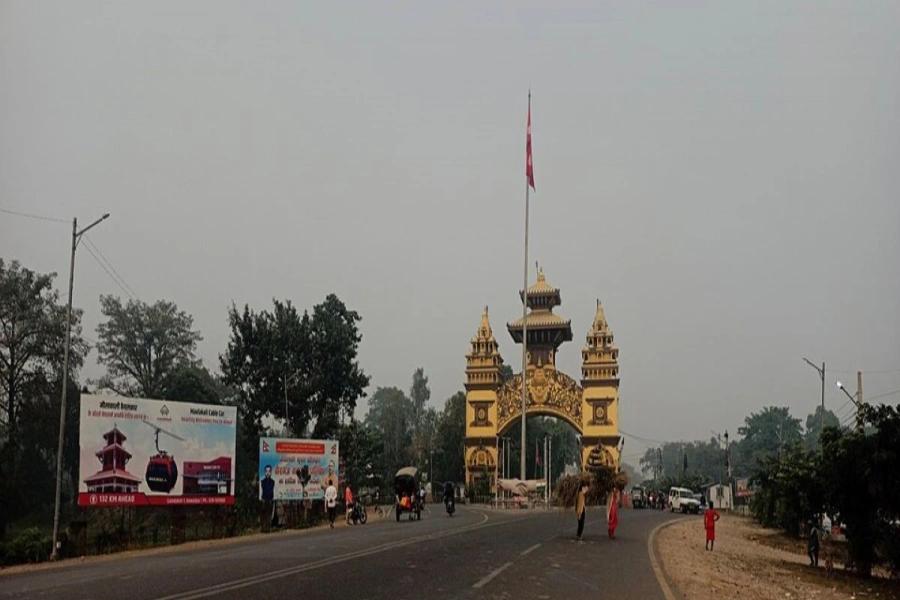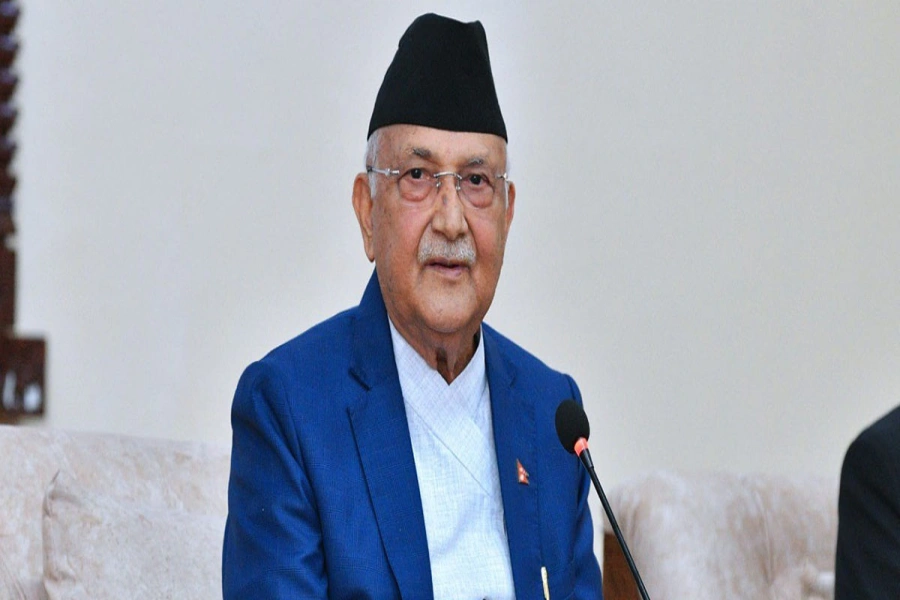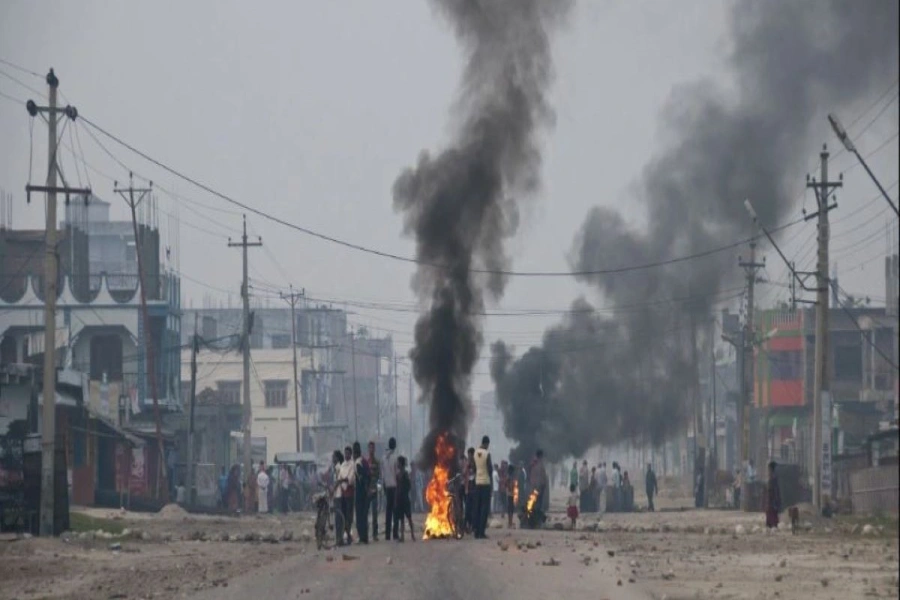Nepal has been ranked as the 10th most affected country in the world by climate change
Nepal, despite contributing a small share of global greenhouse gas emissions, recognizes the risks of climate change. Our mountains are a vital source of revenue and water for South Asia. We must take the lead in climate diplomacy by cooperating with our neighbors.
It is often said that nations do not have a heart, but rather are driven by selfishness and self-interest. Diplomacy is a game of cunning, but it is also an art that involves winning the hearts of others by accurately conveying your point of view. Nepal, situated among the towering Himalayan mountains, is facing a harsh reality - climate change poses a significant threat to its delicate ecosystems and susceptible societies.
To address this problem, effective climate diplomacy - the practice of forming global alliances - has become crucial for Nepal's survival. This article delves into the impacts of climate change on Nepal, Nepal's initiatives, and the importance of climate diplomacy.
How is Nepal affected?
A report by ICIMOD warns that climate change could have a significant impact on the Himalayan region and those living along the river banks. The report suggests that continued global temperature increases could result in the melting of two-thirds of the region's glaciers by 2100, affecting millions of people. Nepal's contribution to global greenhouse gas emissions is just 0.027%.
SHIFT for Our Planet: Youths urge authorities to make climate j...

ICIMOD report revealed that Nepal has a total of 47 glaciers that pose potential dangers. Of these, 42 are located in the Koshi watershed, 3 in Gandaki, and 2 in Karnali. The study also highlighted that 21 glaciers on the Nepal side are at risk of breaking at any given moment. Additionally, research conducted by the Department of Water and Meteorology between 1971 and 2014 showed that Nepal's temperature is increasing by 0.056 degrees Celsius annually. More studies, such as one from 2017, suggest that this rate is even higher - up to 0.086 degrees in the Himalayan region.
Nepal has been ranked as the 10th most affected country in the world by climate change, according to the 2021 Global Climate Risk Index. As per the National Action Plan for Monsoon Preparedness and Response prepared by the National Disaster Risk Reduction and Management Authority, 5,825 landslides and 2,362 deaths were reported due to heavy rains in the year 2079 BS.
Over the past 11 years, water-borne disasters in Nepal have resulted in the loss of more than 2,300 lives and caused damages worth over Rs 19 billion. These statistics are quite alarming, and it is natural to feel concerned about the possibility of further damage in the future.
Nepal’s initiative
During COP 28, which took place from November 30 to December 12, 2023, Prime Minister Pushpa Kamal Dahal led the Nepalese delegation to Dubai. This was a significant opportunity for Nepal to raise awareness and voice concerns about the injustice done to Nepal. It was an important part of Nepal's climate diplomacy, and for the first time, Nepal had its own Nepal Mandap. The government's diplomatic move to have UN Secretary-General António Guterres visit Nepal before attending COP 28 also had a positive impact on the outcome of the conference.
While visiting Nepal, the Secretary General of the United Nations utilized social media to raise awareness about the country's climate challenges. He shared the alarming truth that Nepal has lost almost a third of its snow cover in just 30 years. During his trip, he visited Syangboche and Annapurna Circuit, where he engaged with the local community and observed the majestic mountains. Prime Minister Dahal praised the Secretary General's trip, noting that it has had a positive impact on Nepal's participation in COP 28. The prime minister's endorsement further reinforces the effectiveness and result-oriented nature of COP 28, aligning with Nepal's climate diplomacy goals.
As of November-december in the current year, only 3,686 electric vehicles have been imported, with the majority (62%) coming from China. This import trend has helped to reduce carbon emissions. Nepal had set an ambitious goal of having 45% of its total land area covered by forests by 2030, which has already been achieved. Furthermore, Nepal is aiming to achieve Net Zero emissions by 2045 and it is speculated that this will require significant investment and a shift towards climate diplomacy in future diplomatic efforts. Through climate diplomacy, Nepal can improve its diplomatic image and garner support from many countries.
Why Climate Diplomacy?
Climate diplomacy entails the delicate process of negotiating and executing climate-related policies, treaties, and agreements on a global scale. Additionally, it involves fostering collaboration among nations and other stakeholders to mitigate greenhouse gas emissions, adapt to impacts of climate change, and encourage sustainable development. Climate diplomacy also encompasses advocating for climate action worldwide through diplomatic discourse, public diplomacy, and foreign policy tools.
In today's world, the global community places significant importance on climate change issues. Thanks to the dedicated efforts of mountain countries such as Nepal, glacier preservation was included in The Glasgow Pact during COP 26. During last year's COP 27, Nepal worked alongside other mountain countries to discuss topics such as identifying mountainous regions, crisis prevention and mitigation measures, and risk adaptation strategies in separate meetings. At COP 27 in 2022, Nepal's focus was on "No More Melting No More Losses," advocating for the cessation of mountain melting and prevention of further environmental damage. Nepal effectively presented its case during the primary discussions and negotiations of the climate change conference, further strengthening its position.
At COP 26, Nepal joined forces with G77 and China to advocate for the establishment of a dedicated financial mechanism to address damages caused by climate change. At COP 28, Nepal made history by hosting a round table discussion where they eloquently conveyed the urgent need to address the impact of climate change on Nepalese communities and mountainous regions. This exemplifies Nepal's commitment to climate diplomacy.
Initiatives taken by other countries
Bhutan, our neighboring country, has Gross National Happiness (GNH) as a key indicator of development. This aligns with climate diplomacy efforts, as Bhutan has demonstrated its commitment to environmental protection and carbon negativity by covering 70% of its land with forests.
Fiji had the honor of chairing COP 23 in Germany, a conference attended by thousands of international delegates. As a small nation comprised of nearly 300 islands, Fiji highlighted the threat posed to its fellow island nations, particularly Tuvalu, the Marshall Islands, and Kiribati, which could be submerged in the next 50 years.
In line with the Paris Agreement, Europe has pledged to achieve net zero carbon neutrality by 2050. Similarly, Costa Rica, home to 500,000 species and 4% of the world's total species has set aside 26% of its land as protected areas. In 2021, Costa Rica announced its National Decarbonisation Plan, to achieve net zero by 2050.
Nepal, despite contributing a small share of global greenhouse gas emissions, recognizes the risks of climate change. Our mountains are a vital source of revenue and water for South Asia. We must take the lead in climate diplomacy by cooperating with our neighbors. As a least-developed country leading the UN, we appeal for greater focus on climate issues. Let's lead by example and become a leader in the fight against climate change.





































